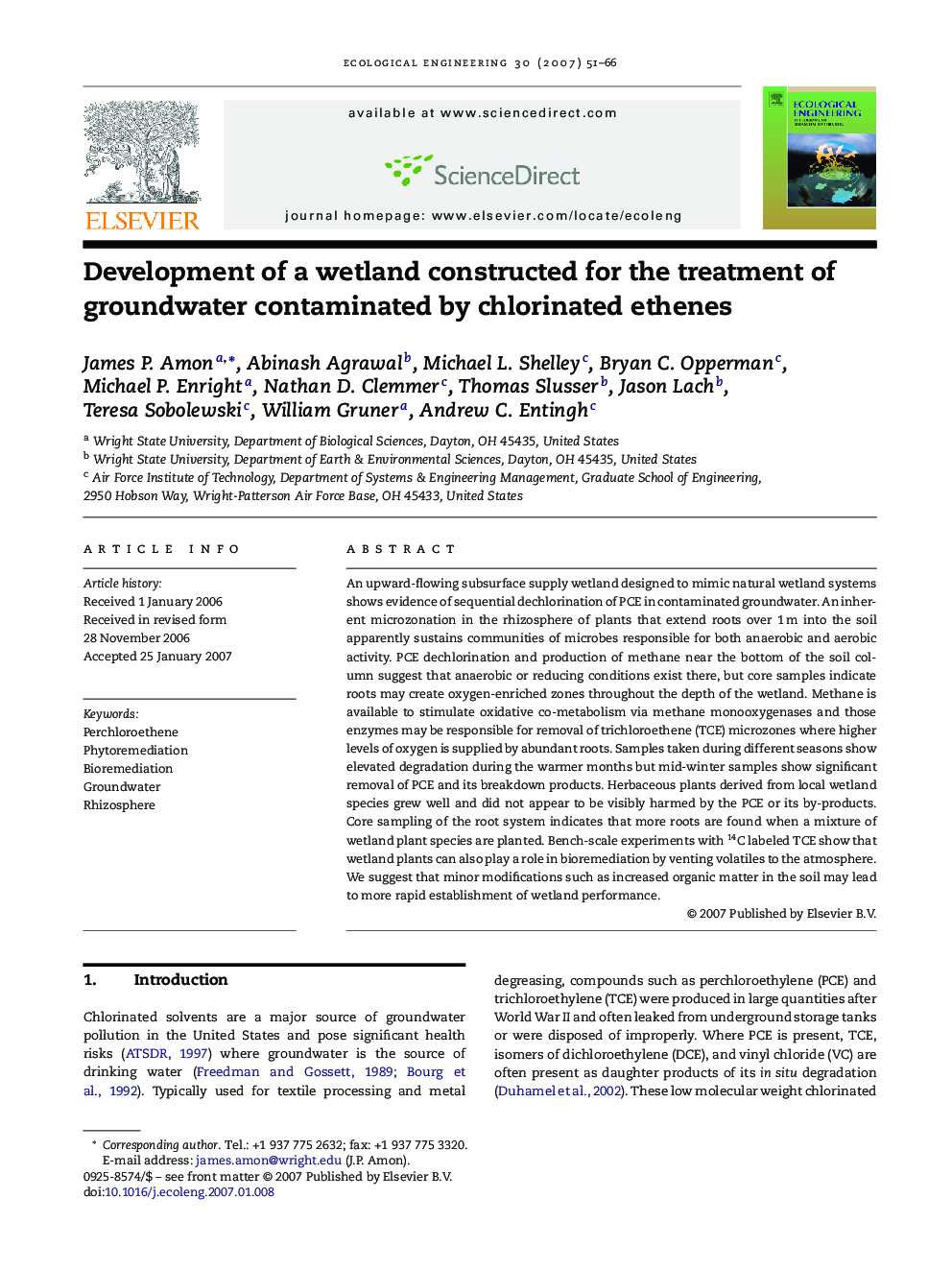| Article ID | Journal | Published Year | Pages | File Type |
|---|---|---|---|---|
| 4391113 | Ecological Engineering | 2007 | 16 Pages |
An upward-flowing subsurface supply wetland designed to mimic natural wetland systems shows evidence of sequential dechlorination of PCE in contaminated groundwater. An inherent microzonation in the rhizosphere of plants that extend roots over 1 m into the soil apparently sustains communities of microbes responsible for both anaerobic and aerobic activity. PCE dechlorination and production of methane near the bottom of the soil column suggest that anaerobic or reducing conditions exist there, but core samples indicate roots may create oxygen-enriched zones throughout the depth of the wetland. Methane is available to stimulate oxidative co-metabolism via methane monooxygenases and those enzymes may be responsible for removal of trichloroethene (TCE) microzones where higher levels of oxygen is supplied by abundant roots. Samples taken during different seasons show elevated degradation during the warmer months but mid-winter samples show significant removal of PCE and its breakdown products. Herbaceous plants derived from local wetland species grew well and did not appear to be visibly harmed by the PCE or its by-products. Core sampling of the root system indicates that more roots are found when a mixture of wetland plant species are planted. Bench-scale experiments with 14C labeled TCE show that wetland plants can also play a role in bioremediation by venting volatiles to the atmosphere. We suggest that minor modifications such as increased organic matter in the soil may lead to more rapid establishment of wetland performance.
